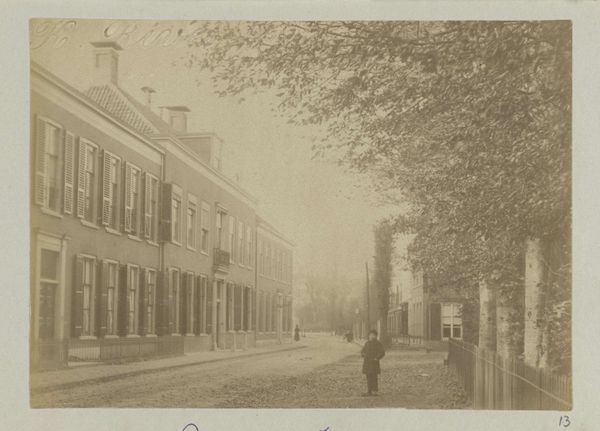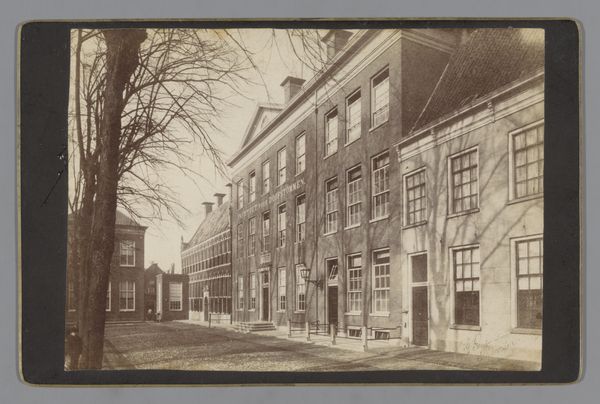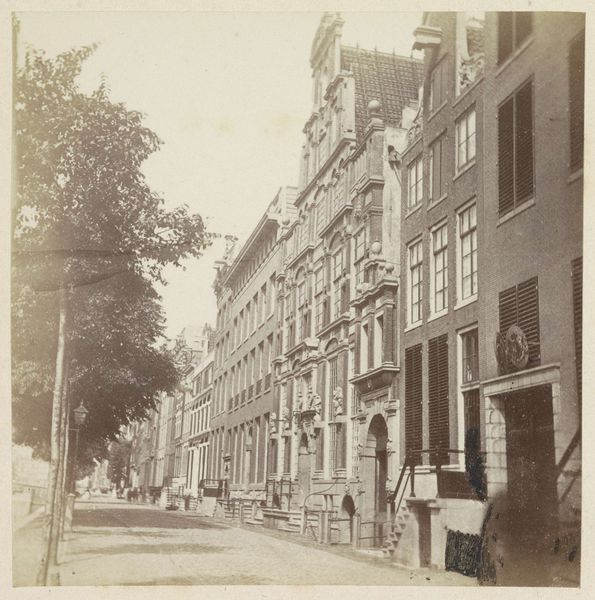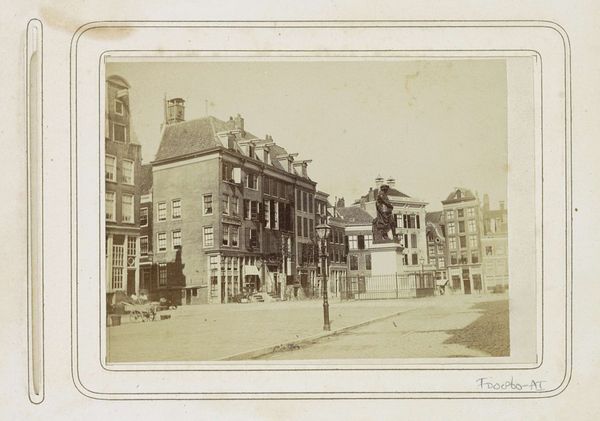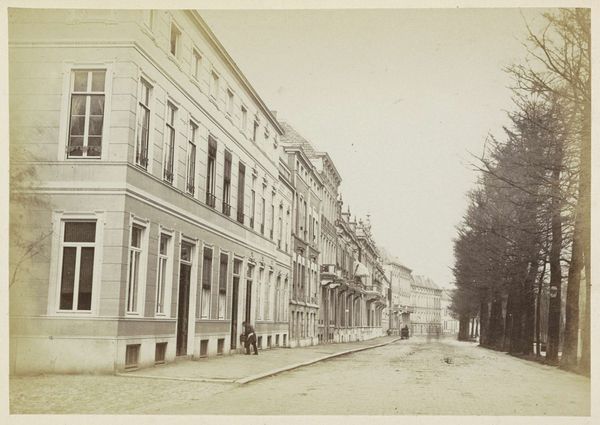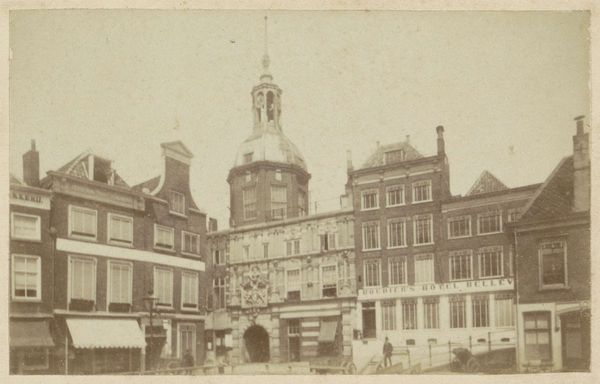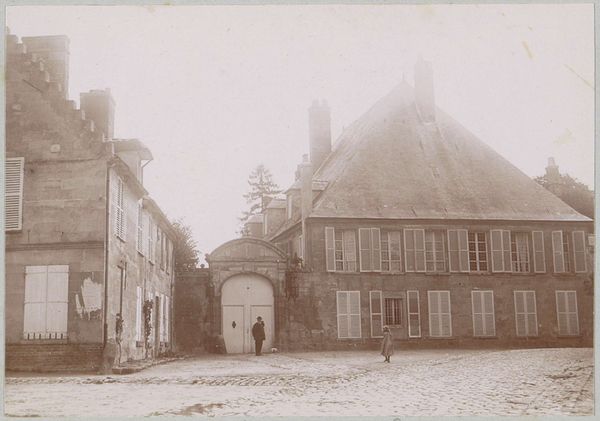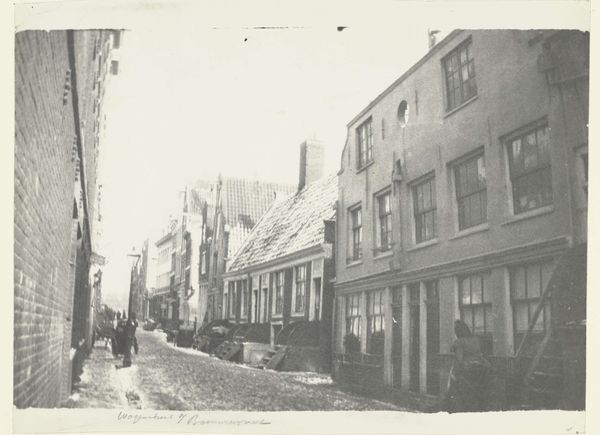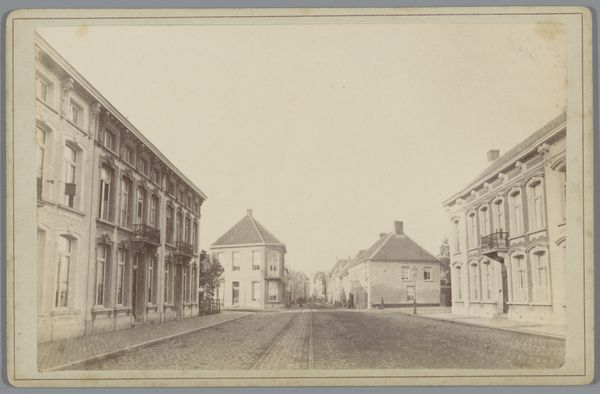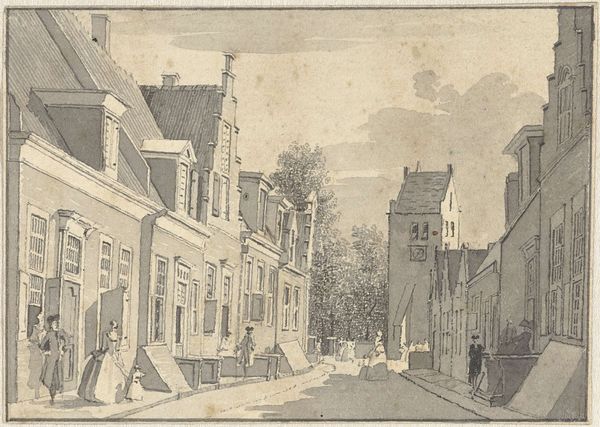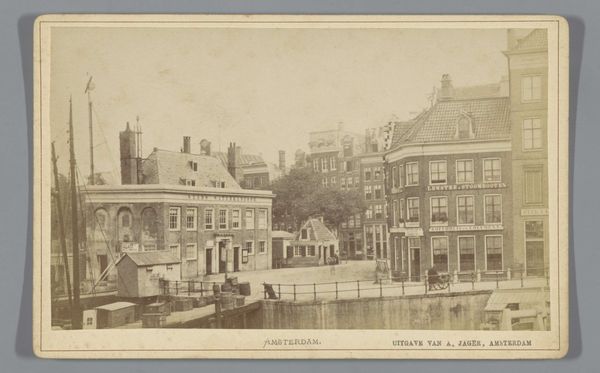
Gezicht op de voorzijde van Paleis Huis ten Bosch in Den Haag c. 1865 - 1870
0:00
0:00
andriesjager
Rijksmuseum
photography, architecture
#
landscape
#
photography
#
cityscape
#
architecture
#
realism
Dimensions: height 90 mm, width 133 mm
Copyright: Rijks Museum: Open Domain
Editor: We’re looking at "Gezicht op de voorzijde van Paleis Huis ten Bosch in Den Haag," a photograph dating from around 1865-1870 by Andries Jager, housed at the Rijksmuseum. It's incredibly detailed, yet there's an overall subdued, almost sepia quality to the tones. What strikes you first about this photographic print? Curator: Initially, the pronounced emphasis on geometrical relationships becomes apparent. The composition is rigorously structured, dividing the visual field into clear horizontal and vertical planes. How does the repetition of architectural elements influence your perception? Editor: The repeated windows and chimneys definitely create a sense of order, but almost to a monotonous degree. What does the architectural symmetry communicate to you? Curator: The symmetry functions as a signifier of power and order, integral aspects of classical architectural aesthetics. The technical capabilities inherent in Jager's photographic process enable a high level of representational precision, contributing to a detailed depiction of light and shadow that enhances the three-dimensionality of the building’s facade. Have you considered how the photographer's framing affects our reading of the image? Editor: It's a very direct, frontal view, not particularly dynamic. Almost like a historical record, aiming for objectivity. Is that a conscious artistic choice? Curator: Undoubtedly. By avoiding dramatic angles or expressive manipulations of light, Jager seems intent on presenting the palace as an object of inherent significance, devoid of subjective interpretation. The very stillness invites analysis of its form. Editor: That’s a fascinating lens through which to see it – focusing on its structure as its message, beyond just historical documentation. Thank you. Curator: The pleasure was all mine. Approaching the work as a study of form provides a richness to one’s experience that is all too often overlooked.
Comments
No comments
Be the first to comment and join the conversation on the ultimate creative platform.
